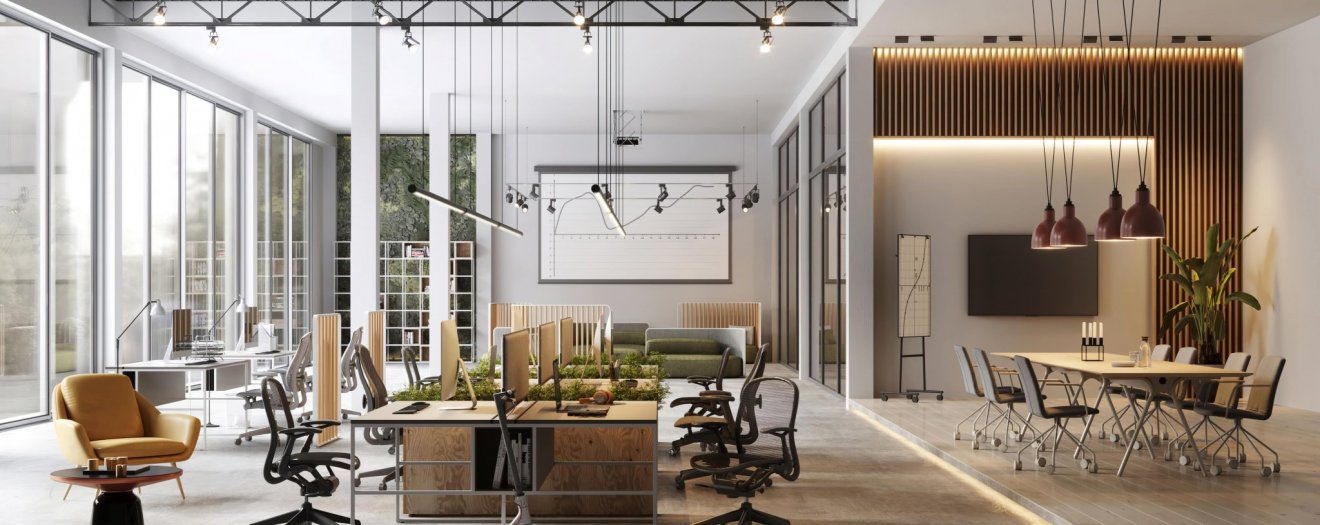
We’re all aware of the questions, but it was the answer that surprised us.
Who would have thought that remote working works? Its the answer that nobody expected.
I concede the statement is too generalised, but the intriguing element is the truth in it. The landscape has changed. What we’ve learned in the last eight weeks is that large scale remote working is possible, and quite possibly efficient. The question for business to consider is, should we extend the definition of our Workplace? If so, to what extent? What are the further implications on a range of business targets and objectives?
The (brief) history of Workplace
The history of the modern office dates back to London, England in 1726 when the East India Company built the Ripley Building. The East India Trading company grew to such a significant size that it with its growth bought complex bureaucracy and paperwork. The solution? Bring it together in one place to promote efficiencies.
Enter the birth of the modern office.
Fundamentally, while office design has changed significantly, the underlying premise has not. A workplace creates efficiencies for business by bringing its people together in one place with a unified infrastructure.
That theory has broadly held for the last 300 years because there has not been a better option; until now.
Perhaps the question is flawed? Changing Workplace to Workspace.
Advancements in technology have long been the catalysts for change.
Now, with the assistance of technology, businesses are in a position to challenge the paradigm of the traditional Workplace. Typically for most organisations that definition considers the physical office locations, agile working and flex-spaces.
When we revisit the original question of “returning people to the workplace and maximising it with social distancing”, to answer effectively, and looking forward beyond 2020 we need to consider our assumptions on Workplace may be still in 2019.
I would like to introduce a new definition for you to consider; Workspace.
Workspace, as a definition intends to remove the confines of our previous limitations of Workplace.
While Workspace would still include a physical office, it can extended to include modes such as remote working (amongst others) as part of an ongoing viable work design solution for business.
The beauty of breaking the paradigm is it extends beyond focused work. Take collaboration, and a typical meeting of 4 colleges. Traditionally the meeting would be held in that small 4 person meeting room with limited natural light. Using the workspace approach we can consider moving the meeting to a convenient local park while you all walk.
Here’s four simple kickers with the last statement:
- Research actually suggests that we perform better cognitively when we move, as moving increases the oxygen supply to the brain;
- Research also suggest we respond and connect to nature, specifically organic shapes, colours, smells and light improving our overall mental health and well being;
- We could all do with 30 minutes of getting the extra steps; and
- If you could do something different with that 10sqm of meeting room space you may no longer need as a static meeting room what could it be?
Using workspace as a premise, businesses can re-imaging how they work and what maximising office performance may look like for them. This enables the possibility re-defining their working landscape ready to address the new world, ready for what lies ahead.
Death of the Office?
No.
The physical office will remain critical for companies culture and values, and for many companies, is the physical realisation of its brand. Most importantly, it brings the power of people together, harnessing spontaneity, creativity, mentoring and building trust by simply ‘being in the room’. By no means am I suggesting that remote working is the answer. No doubt if it was adopted long term in isolation it’s a culture killer and blurs home/work life. However, carefully considered and correctly supported, expanding a businesses Workspace definition may support greater diversity and inclusion for companies and provide further opportunities.
With the expanded definition of Workspace now in consideration, the functions and design of the physical office take a more specific role.
We can now consider a physical office as a specialised asset of a business, taking on a more nuanced function.
For example:
- Enabling complex or specific tasks not possible in another location;
- Fostering mentoring of developing staff;
- Building deep and meaningful connections between employees, leveraging trust;
- Experiencing the company, culture, brand physically and engaging with clients; and
- Focusing on creating efficiencies that physical, face-to-face contact provides.
The Roadmap
There is no “one size fit’s all” solution for companies when it comes to how they work.
For every company challenging the Workplace to Workspace paradigm should, and will be unique. Any workspace strategy needs to be assessed financially and consider health and safety. In addition it needs to account for organisational design, company goals, culture, behaviour, geographic location, risks, technology, it’s work design, and so the list goes on.
About the Author

Brenton Phillips is the Managing Director of Bright Group, a strategy lead, interior fitout firm and refurbishment group with integrated project delivery. With over two decades of experience spanning strategy, finance, asset management, design and construction management, Brenton holds a degree in Economics and Finance, attended multiple Harvard Business School courses, and is a licensed builder in Victoria & Western Australia.